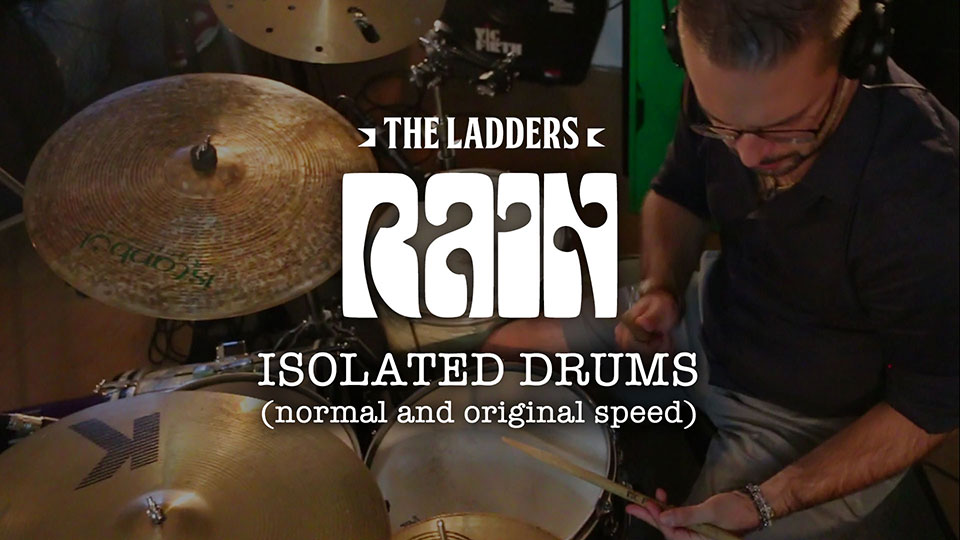In the song Rain, the Beatles created a sound never heard before using the reverse tapes. By including it as a B-side along with Paperback Writer, a more classical song, they gave the world a taste of what is about to come with the revolutionary psychedelic albums…
Released in 1966 as a single along with Paperback Writer, Rain is one of the most notable B-sides of all time. The song, born in the early years of psychedelic rock, is also famous for the many studio effects that the Beatles enjoyed inventing to recreate that alienating sensation that can be induced by acid.
In addition to the memorable “posseduto” drumming of Ringo Starr (as he describes it), recorded at a faster speed and then played back slower and heavier, Rain features McCartney's “solista” bass, almost more prominent than the hypnotic vocal parts. But even more importantly, we find one of the earliest appearances of backward tapes on record (if not the very first).
The Beatles filmed the promotional video for Rain alongside Paperback Writer at Chiswick House in London. To recreate the atmosphere, we were at the Carmela Cortini Botanical Garden of the University of Camerino, which offered us a wonderful location surrounded by greenery.
- Massimo Gerini: vocals, rhythm guitar (Gretsch 6120 Chet Atkins).
- Brizio Romagnoli: backing vocals, bass (Rickenbacker 4001).
- Riccardo Scarponi: backing vocals, lead guitar (Gibson SG Roxy with Maestro Vibrola).
- Mauro Cimarra: drums (Ludwig Club Date).
- Gabriele Chiappa: backing vocals, tambourine.
Recorded and mixed by Massimo Gerini.
Video by Brizio Romagnoli.
A special thanks also goes to our friend Ennio Mircoli, his guitars, and to Roberta for her usual shots taken "under threat" :)
LYRICS:
If the rain comes, they run and hide their heads
They might as well be dead
If the rain comes, if the rain comes
When the sun shines, they slip into the shade
(When the sun shines down)
And sip their lemonade
(When the sun shines down)
When the sun shines, when the sun shines
Rain, I don't mind
Shine, the weather's fine
I can show you, that when it starts to rain
(When the rain comes down)
Everything's the same
(When the rain comes down)
I can show you, I can show you
Rain, I don't mind
Shine, the weather's fine
Can you hear me, that when it rains and shines
(When it rains and shines)
It's just a state of mind
(When it rains and shines)
Can you hear me, can you hear me
Rain "isolated drums"
normal and original speed
There's no doubt: for Ringo Starr, Rain is the most beautiful song of all time and, of course, the best ever made by the Beatles. This is primarily due to his drum performance, which has always impressed him positively: «I feel as though that was someone else playing. I was possessed! I think I just played amazing. I was into the snare and the hi-hat. I think it was the first time I used this trick of starting a break by hitting the hi-hat first instead of going directly to a drum off the hi-hat.»
Furthermore, since the idea and recording of Rain emerged during the period when the Beatles began to explore the use of sound effects that could be reproduced in studio recordings and gained some familiarity with them, they were the first to employ certain technical tricks during recordings. Among these is the rhythm track of Rain, recorded at an accelerated speed and then slowed down during playback. This gave the song “a suspended, dizzy atmosphere”.
«The drums became a giant drum kit… We got a big, ponderous, thunderous backing and then we worked on top of that as normal, so that it didn’t sound like a slowed-down thing, it just had a big ominous noise to it. It was nice, I really enjoyed that one.»For our cover, we also tried to use this and other techniques. In this video, you can see the drum track first at regular speed and then at the original speed at which it was recorded.
Rain "isolated bass"
Rickenbacker 4001 C64 Fireglo
[...] Paul McCartney overdubs the bass to the rhythm track at normal speed playing his brand new Rickenbacker 4001 Fireglo, very similar to the one in this video, and experimenting with a new recording technique based on the use of a loudspeaker as a microphone.
Rain is one of the very first songs with Paul on his new 1964 Rickenbacker 4001 bass. With the transition from Höfner to Rick, Paul’s style as a bass player changes too, becoming more melodic and experimental and Rain is a great example of Paul McCartney’s innovative genius with this instrument too.
- Bass: 2010 Rickenbacker 4001 C64 Fireglo. Very similar to the one Paul McCartney played in this song.
- Amp: 1965 Vox T60.
- Strings: Thomastik JF344 flatwound.
- Mic: Beyerdynamic M88TG.
Rain "isolated guitar 1"
Gretsch 6120 'Chet Atkins' Hollowbody
Rain is noted for its backwards vocals over the song's coda. It was the first time that reversed sounds had appeared in a pop song. It's just one of the many tape-manipulation techniques the band embraced at this time, in fact Rain is also noted for other innovative technical features: in the first part of the video you can hear our cover with its final speed and in key of G Major. Actually, in order to be faithful to the Beatles original version, the rhythm track has been recorded at a faster speed and in a different key (A Major), and then slowed back at normal speed, till restoring the key of G major, thus giving a radically different tonal quality to the music.
At 1:27 you can hear the song in its original speed, as it was recorded before being slowed down.
A special thanks goes to our friend Ennio Mircoli and his guitars.
- Guitar: 1997 Gretsch 6120 ‘Chet Atkins’ Hollowbody with standard tuning. The pickups were replaced with 1967 Filtertone. Very similar to the one John Lennon played in this song.
- Amp: 70s Fender Twin Reverb amp.
- Mic: Sennheiser E609.




